
LONDON TRANSPORT T CLASS
AEC Regal single-deckers
This page prepared by Ian Smith, created 16th August 1999, updated 25th July 2004.
10T10 Regals: T453 - T718 (total 266)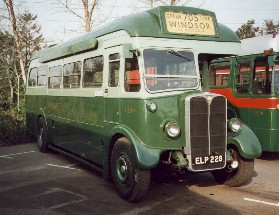 R.J.Mitchell said of aircraft design: "If it looks right it probably is right".
This was true of his Supermarine Spitfire, and it was just as true of its contemporary design, the 10T10 Regal.
It is strange how much difference small changes can make. With a larger engine,
and the forced changes that made to front end design,
the 10T10 was a design classic, enjoyed both by staff and passengers, whereas the 9T9 was not.
The 10T10 performed well and looked good.
R.J.Mitchell said of aircraft design: "If it looks right it probably is right".
This was true of his Supermarine Spitfire, and it was just as true of its contemporary design, the 10T10 Regal.
It is strange how much difference small changes can make. With a larger engine,
and the forced changes that made to front end design,
the 10T10 was a design classic, enjoyed both by staff and passengers, whereas the 9T9 was not.
The 10T10 performed well and looked good.
They were ordered in 1938 to replace the original Regals on GreenLine services, a first batch of 150 to replace the rear-entrance 7T7s, then a further 116 (plus 3 spare bodies) that together with the 75 TFs replaced the forward entrance 1/7T7/1s and other odd coaches.
The main complaint about the 9T9 was its small engine.
The 10T10 had this replaced by the larger 8.8 litre Comet III diesel,
which provided plenty of power.
The problem was that this engine usually required an extra 4.5 inches in front of the bulkhead,
and the 9T9 design already used the full vehicle permitted length.
This all led to a redesign around the front, with the nearside wing body-mounted as on the new RT design, and a normal bonnet and cabfront. On the nearside the sliding door was moved outside into a recess, resulting in a little more room inside. The streamlines behind the wheel arches were updated too, and an air-conditioning pod mounted on the rear of the roof. (No, Leyland Nationals were NOT the first). Preserved T504 at Cobham, April 1999Livery at first was the three-tone greens introduced on the 9T9s, which applied to the early deliveries, up to T598 at least. This was followed by two-tone green, with Lincoln green and apple-green. Roof-boards, which had the contemporary raised oval in the middle for the route letter, were black and orange, with white via points on the black, with black for the destinations (and LONDON) if a cross-town route on the orange parts. A black slip-board with white lettering might inhabit the holder by the front saloon window, Blinds appear to have been black, with green GREEN LINE lettering occupying half the display, and the destination in white above or below.
Updated diagrams of the early 10T10s, showing the early and later liveries when new. Some updates, and livery scheme, courtesy of Andrew Colebourne.T499 at Upminster Station on 6th December 2014, wearing its new 1930s GreenLine livery, at work on the X86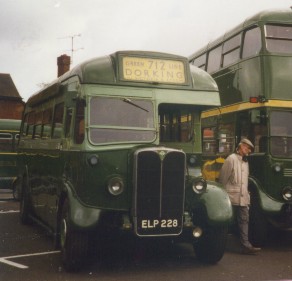
There were variants. Twenty-five of the first batch had lower geared rear axles, to avoid the embarrassment of making Green Line passengers get out if they stalled on Westerham or Titsey Hills! These were designated 1/10T. This unfortunately made them too slow to keep time on the rest of the route. So AEC came up with an overspeed gearbox that allowed hill-climbing AND fast running.
The internal design of the second batch was altered to allow 34 instead of 30 seats,
which required reducing the seat spacing
and extending the nearside seating area into the door opening.
The change between these T10/1 bodies and the earlier T10 variety was not a neat one,
and was further muddled as bodies were interchanged at overhauls.
Even the hill-climbing 1/10Ts wandered in their allocations.
There were other minor variations in the treatment of mudguards and cab-fronts,
but these did not warrant separate codes.
Into ServiceThe coaches went into Green Line service during 1938 and 1939, and quickly earned an excellent reputation. (They also incurred some censure from the police, as speeding was all too easy without a speedometer!)
War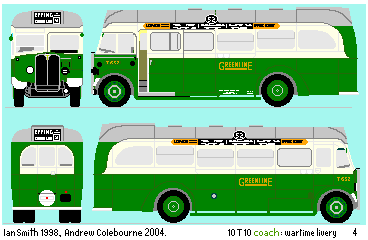 The onset of war in September 1939 brought the abrupt cessation of their
Green Line work, and the Green Line coaches were requisitioned as ambulances.
So some were swapped for 9T9s (which had previuosly been demoted to bus status) and became officially buses, in time adopting the Lincoln green and white bus livery.
Others were used for the limited Green Line services that were re-introduced in early 1940,
as the necessity for such services became apparent by their absence.
A new network of numbered routes was set up, only to be upset by the Blitz in the autumn of 1940.
All cross-London services were curtailed then, to avoid unwonted delays.
The re-instated Green Line network lasted until the end of September 1942,
when shortages, particularly of rubber, caused the service to be withdrawn again until 1946.
The onset of war in September 1939 brought the abrupt cessation of their
Green Line work, and the Green Line coaches were requisitioned as ambulances.
So some were swapped for 9T9s (which had previuosly been demoted to bus status) and became officially buses, in time adopting the Lincoln green and white bus livery.
Others were used for the limited Green Line services that were re-introduced in early 1940,
as the necessity for such services became apparent by their absence.
A new network of numbered routes was set up, only to be upset by the Blitz in the autumn of 1940.
All cross-London services were curtailed then, to avoid unwonted delays.
The re-instated Green Line network lasted until the end of September 1942,
when shortages, particularly of rubber, caused the service to be withdrawn again until 1946.
Green Line coaches lost their shiny roofs on the outbreak of war, receiving matt grey or brown. They acquired white edges to mudguards, corners and doorways, and lost the efficiency of most of their lighting. Some of those requisitioned for the Emergency Medical Service had the lower parts of their windows masked over, and the upper parts protected with blast tape.
In 1942 many 10T10s were loaned to the US Army and the American Red Cross, who converted them to "Clubmobiles" - mobile canteens. The American Red Cross vehicles were painted grey and given the names of various Ameican cities. They dispensed the kind of culinary comforts indispensible to the American service-man at American bases all round Britain. Others were adopted by the American Army as transports. T499, although not a Clubmobile itself, was painted temporarily as such for an appearance at the 2013 Purfleet Running DayMost, but not all, were returned in 1946. One somehow ended up, reregistered, with Smith's of Reading, and another with Neath & Cardiff Luxury Coaches, with whom it worked for seven years post-war on the Swansea - Cardiff service. Others just disappeared. The others went to Chiswick for overhaul and refurbishment for their return to Green Line duties.Post-war Green Line
The 10T10s, TFs and 6Q6s continued to provide the renewed front-line Green Line service. The 6Q6s started out their post-war careers on the Godstone, Reigate and Crawley services services: 709, 710 and 711, with the Regals on the 715 between Guildford and Hertford and the 720 between Aldgate and Bishops Stortford, operated by Epping. The TFs, with their greater seating capacity, were used initially on the Grays services, while austerity Daimlers were used on the busy Brentwood services: East London commuters had the choice of austerity Green Line or ancient Gresley quad-arts! Tunbridge Wells and Windsor resumed the 704 with ex-ambulance 10T10s, as did Addlestone and Hitchin with the through service on the 716.
As more ambulances were restored to passenger service Green Line expanded, but not to pre-war levels. 10T10s took on the 703, 718, 708, 717, 705, 726, 702, 701, 706 and 707. 6Q6s took on the 724 and 725. TFs had the Dorking group: 714,713, 712, and Daimlers took the 722.
The Whipsnade service was revised in 1947 to use Daimlers and STLs from Romford. The Kings Cross terminus of the 727 was amended to Judd Street. Later in 1947 the 709, 710 and 711 were extended from Baker Street and took over the 724 and 725 routes to High Wycome and Chesham, rendering the 6Q6s at Amersham surplus to Green Line requirements. Other types helped out on Green Line, especially as reliefs at weekends, including 4Q4s, 9T9s, 1/7T7/1s and STLs. Epitomy of post-war Green Line elegance: T504 at Brooklands, London Bus Museum, April 2017.The Green Line routes then settled down, with the 10T10s more or less route bound until the advent of the Green Line RFs in late 1951. Even then some 10T10s were required as spares, and for expansion of Green Line services: the new orbital south London 725 service was introduced using them alongside RFs in 1953.
The first red buses went to Country Area garages, until they could be released by the arrival of Green Line RFs. Then they were dispatched to Uxbridge (UX) and Hornchurch (RD), where they replaced eight and six 9T9s respectively. Others went to Kingston (K), where they should have released TDs to replace 11T11s that were spares at other TD operating garages. In the event Kingston kept the 10T10s, sent a pair of TDs to Edgware for the 240A, and lost some of its aged 1T1s. Red 10T10s also went to Loughton (L) to replace seven 11T11s. Four went to Edgware (EW), seven to Enfield (E), one to Leyton (T), two to Southall (HL), one to Tottenham (AR) and two to West Green (WG). The Country Area also replaced 9T9s by 10T10s on bus work at Addlestone (WY) and Leatherhead (LH). New RFs again displaced 10T10s in February 1952, enabling them in turn to replace the remaining Country 9T9s and 11T11s, and the last Central Area 11T11s, at Bromley (TB), Dalston (D), Enfield (E) and Muswell Hill (MH). The 10T10s also found themselves at Sidcup (SP) on the 228, and Merton (AL) for the 200. But the respite in red was short-lived, as the RF tide turned to red. By the end of red RF deliveries in March 1953 the red 10T10s were only found in service at Kingston (K) and Enfield (E). In May the Enfield single-deck routes received RTs, after a bridge was strengthened, and Enfield lost its 10T10s and its TDs, the latter going to Kingston to displace the last 10T10s there. Another chapter was over. A few 10T10s were hired to BEA for use on the London Airport shuttles. Their Commer Commandos were being overstretched by the new larger aircraft used by BEA, and the new BEA RFs were still awaited. In the Country Area the situation was similar, with all the older single deckers cleared during the GreenLine replacement, leaving only 15T13s, 10T10s, TFs and Cubs apart from the new RFs. The TFs, also recently demoted to bus work, went quickly as the Country RFs took over, followed by the 10T10s. Small pockets of 10T10 operation on less economic routes were abolished with the arrival of the GS class. By the end of 1953 the last Country Area 10T10s were withdrawn from ordinary service, from the 435 and 462 at Addlestone (WY) and Leatherhead (LH). Some remained in service for a while as staff buses (until 1957), but many were sold overseas, to Ceylon and Yugoslavia. The rules of the British Transport Commission prevented their sale as PSVs in the UK, but many found other uses. PreservationT504 survived to preservation, and is now to be found fully restored to Class 6 PSV standard at Cobham Museum, or on rallies and running days.Another was discovered in Australia: T499, fitted with a 7.7litre engine. Does that make it a 9T10? It has been restored by its new owner in the UK, Ensignbus, making its debut at the December 2013 Running Day at Lakeside, wearing a temporary livery as a Clubmobile. During 2014 it received triple-green 1930s livery, and was in service on the 2014 Running Day. If you spot any others during your jaunts round the world, please let us know, as these magnificent beasts are worth preserving. T504 arriving at East Grinstead during the Running Day, April 1998
|
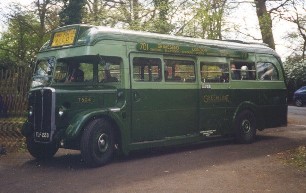
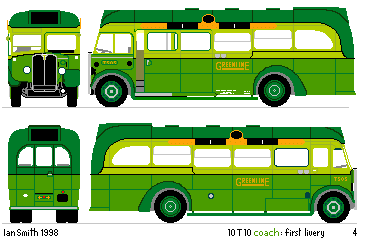
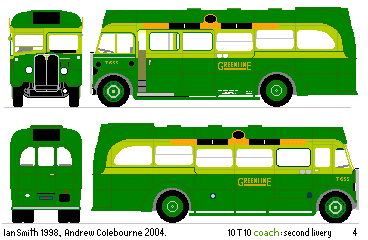
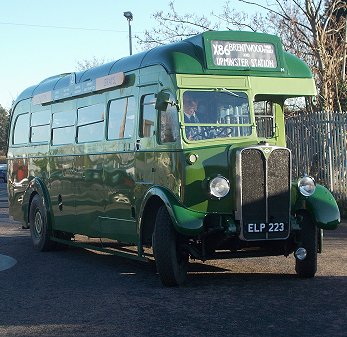
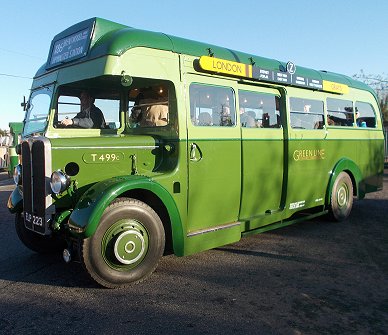
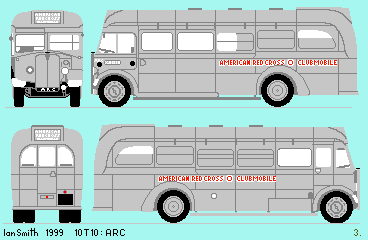 Those not required as ambulances became buses throughout the Country Area, alongside the 11T11s and 7T7s.
Those not required as ambulances became buses throughout the Country Area, alongside the 11T11s and 7T7s.
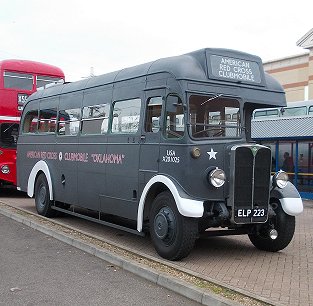
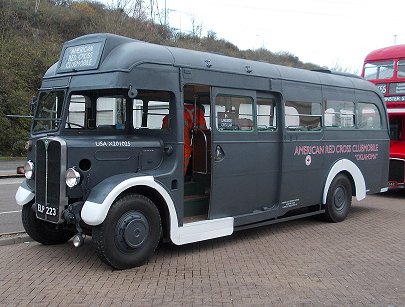
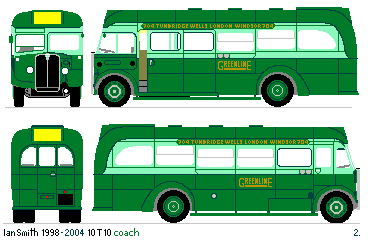 After the war most of the 10T10s settled back into their Green Line role,
and resumed normal overhauls, mostly at Chiswick. Even the Titsey hill gearboxes were pulled out of store (where they had been during the war years),
and went onto 34-seaters for the Oxted Green Lines again. During the war the three spare bodies had remained unused,
until damage through bombing and missile attacks required their use as full replacements.
Other damaged buses had to be extensively rebuilt by outside contractors.
Once the normal overhaul pattern was re-established a few buses exchanged bodies during overhauls.
Green Line livery was initially standard Lincoln Green and white, with white on black blinds,
but soon a pale green relief was adopted, with black on amber blinds.
After the war most of the 10T10s settled back into their Green Line role,
and resumed normal overhauls, mostly at Chiswick. Even the Titsey hill gearboxes were pulled out of store (where they had been during the war years),
and went onto 34-seaters for the Oxted Green Lines again. During the war the three spare bodies had remained unused,
until damage through bombing and missile attacks required their use as full replacements.
Other damaged buses had to be extensively rebuilt by outside contractors.
Once the normal overhaul pattern was re-established a few buses exchanged bodies during overhauls.
Green Line livery was initially standard Lincoln Green and white, with white on black blinds,
but soon a pale green relief was adopted, with black on amber blinds.
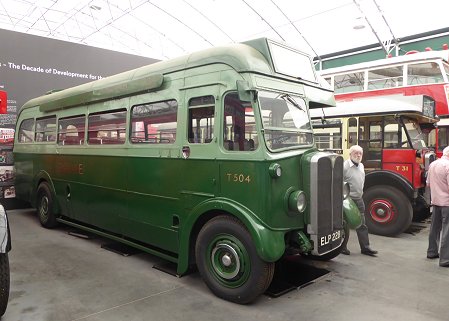
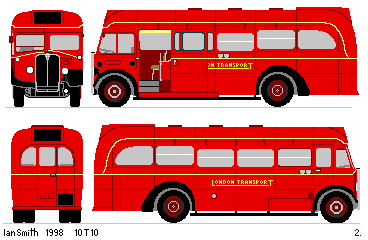 They were also greatly in demand to replace the ageing 11T11s and the disliked 9T9s,
both in Country and Central Areas. The former was no problem,
as coaches were released by the advent of the RFs,
but the Central Area replacement was urgent.
As the first RFs took over the 704, followed by the 711, 709 and 710,
the Country Area shuffled the displaced coaches round
and passed its 40 least favoured 10T10s to Chiswick for the bus modification process.
They were stripped of GreenLine "extras" such as heaters, ash trays, lino flooring and roofboard mounts,
fitted with used ticket boxes and route number stencil holders.
They were repainted into overall red with cream lining.
They were also greatly in demand to replace the ageing 11T11s and the disliked 9T9s,
both in Country and Central Areas. The former was no problem,
as coaches were released by the advent of the RFs,
but the Central Area replacement was urgent.
As the first RFs took over the 704, followed by the 711, 709 and 710,
the Country Area shuffled the displaced coaches round
and passed its 40 least favoured 10T10s to Chiswick for the bus modification process.
They were stripped of GreenLine "extras" such as heaters, ash trays, lino flooring and roofboard mounts,
fitted with used ticket boxes and route number stencil holders.
They were repainted into overall red with cream lining.
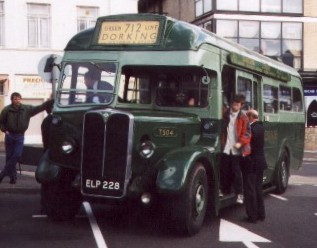
 T453-718: 10T10 histories
T453-718: 10T10 histories Bus Stop
Bus Stop T contents
T contents 9T9s
9T9s 10T10s
10T10s